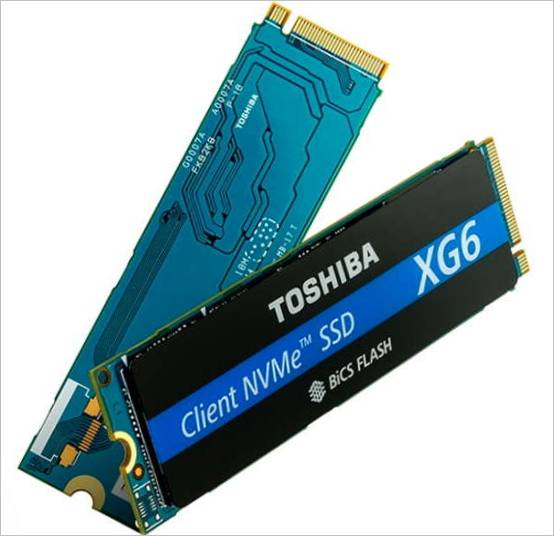Toshiba Electronics Europe GmbH introduced a new series of solid state drives based on its own 96-layer BiCS FLASH 3D flash memory. The new XG6 SSD series is designed for the consumer PC, high-performance mobile, embedded and gaming segments, as well as data center infrastructure as boot drives for servers, caching and logging drives, and general storage.

Toshiba Memory, the company that created flash memory and pioneered the concept of 3D flash memory, is constantly striving to push the boundaries of what is possible and move technology forward. Toshiba BiCS FLASH flash memory technology with 3-bits of data stored in a single memory cell tri-level cell, TLC maximizes SSD performance, storage density and efficiency. Combination of innovative 96-layer technology, state-of-the-art circuitry and manufacturing techniques enables up to 40 percent higher specific crystal count capacity compared to 64-layer 3D flash memory.
“The arrival of the XG6 series paves the way for Toshiba’s transition of SSDs for consumer, data center and enterprise systems to 96-layer technology,” commented Paul Rowan, vice president of Toshiba Memory Europe’s solid-state storage division, in a statement about the revolutionary results of Toshiba’s continuous improvement of BiCS FLASH technology. – Designed for consumer, embedded and data center applications, the new XG6 series of NVMe SSDs deliver versatile storage capacities up to 1TB with an optimized controller for improved performance and power efficiency. Development of BiCS FLASH 96-layer memory validates Toshiba’s leadership in three-dimensional flash memory development.”.
New XG6 series is available in M.2 2280 with PCI Express Gen 3 and NVM Express Version 1 interfaces.3a. The XG6 Series stands out for its combination of efficiency and performance: with a power consumption of 4.7W or less, it achieves 3,180MB/s sequential read performance and nearly 3,000MB/s sequential write performance, with read and write random access performance of up to 355,000 and 365,000 input/output operations per second IOPS , respectively. XG6 Series SSD sequential write performance achieved by optimizing the controller processor is the highest in the industry.
The new drives offer the following additional features:
* Security: TCG Opal Version 2 self-encrypting drive models.01, as well as support for Block SID and digital signature functions
* Support for custom backup area allocation using the NVMe command
* Best-in-class sequential performance consumer class [5]
* improved SLC buffer to improve drive performance under heavy workloads.
“The industry continues to transition to higher-density 3D NAND flash technology, with a projected average annual growth rate of 75 percent in petabytes of 3D NAND flash shipments through 2022,” said Greg Wong, founder and principal analyst at Forward Insights. – Development of 96-layer flash memory is an important step toward meeting the growing need for higher performance and storage density.”.
The XG6 Series, designed for a wide range of read-intensive applications that prioritize power efficiency, peak performance and compact size, will be available in 256, 512 and 1024 gigabyte capacities.

This sounds like an exciting development from Toshiba! I’m curious to know how the 96-layer 3D flash memory in the XG6 series of SSDs enhances its performance compared to previous generations. Can it offer faster speeds, improved durability, or any other significant advantages?
This sounds impressive, but what specific advantages does the 96-layer 3D flash memory offer compared to previous generations of SSDs? Are there any performance improvements or increased storage capacities?
This is incredible news! I’m really interested in learning more about Toshiba’s XG6 series. Can anyone provide more information on the advantages and features of the 96-layer 3D flash memory? How does it compare to previous SSD technologies?